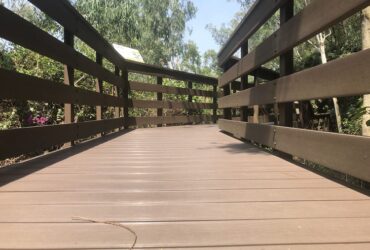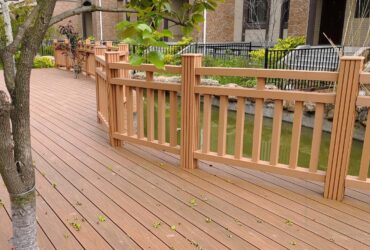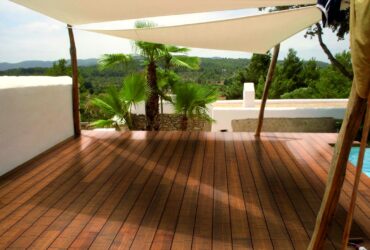15 Questions and Answers on Wood Plastic Composite Products
Wood-plastic composite materials are also known at home and abroad as: plastic wood, environmentally friendly wood, technical wood, recycled wood, plastic wood or polywood. Its standard English name is: Wood & Biofiber Plastic Composites, commonly known as WPC in the industry.It uses primary biomass materials such as sawdust, bamboo chips, wheat straw, rice bran, peanut shells, and cotton straw as the main raw materials. It uses the principle of polymer interface chemistry and the characteristics of plastic filling modification to mix a certain proportion of plastic base materials.It is a basic material with various shapes and structures that can be reversibly recycled and formed after special processing.It not only maintains the appearance and feel of solid wood flooring, but also has good moisture-proof, water-proof, acid-alkali resistance, anti-fungal, anti-static, anti-insect and other properties. Moreover, wood-plastic products have high fire-proof performance, are pollution-free, pollution-free, and can be recycled.
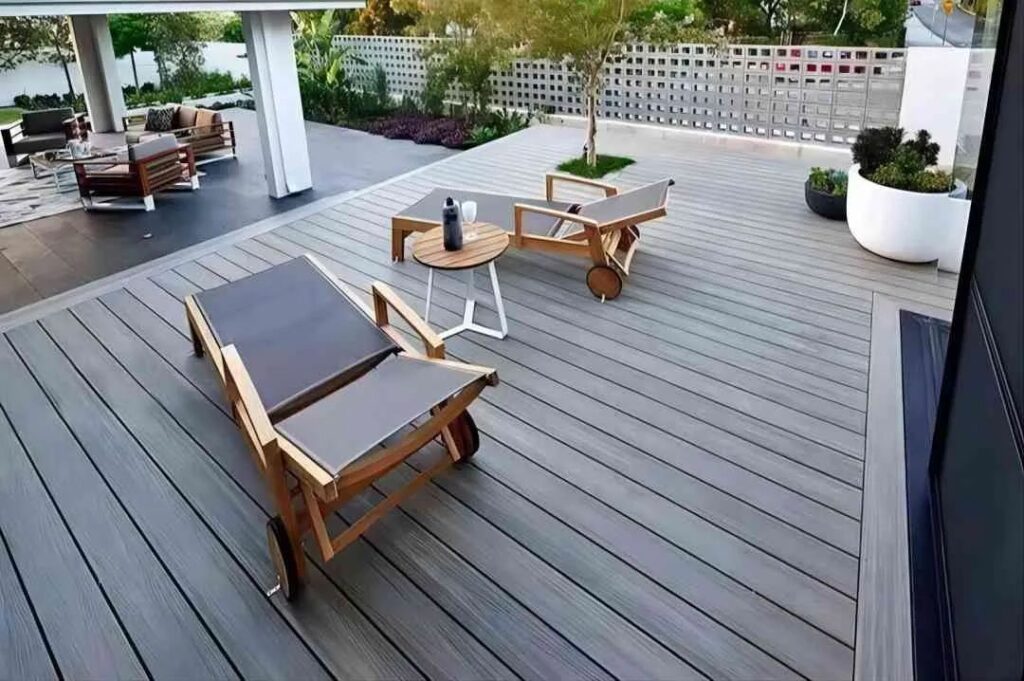
15 questions and answers about wood plastic composite products
1. What is wood plastic? Where is wood plastic used?
Wood plastic is a building material formed by extruding plastic and wood fiber in a certain proportion. Because it combines the water-resistant and anti-corrosive properties of plastic with the texture of wood, it has become the first choice material for outdoor building materials (floors, fences, chairs or waterfront landscapes, etc.).
2. What colors are available for wood plastic? Does it need to be painted?
Unlike wood, wood plastic does not require paint and comes in a variety of colors to choose from. And due to the special molding process of wood plastic, there is no color fading problem.
3. Will wood plastic fade?
Yes. Plastic wood exposed to sunlight and moisture will fade slightly after 10 to 12 weeks.
4. Is wood plastic more flammable than wood?
Wood plastic profiles are a Class C building material that burns similarly to wood. After experiments on combustion characteristics, wood plastic is no more flammable than wood. The burning temperature of wood plastic needs to reach 86 degrees.
5. Is quarantine required during export? Need fumigation? Are special supporting documents required?
No, unlike natural wood, due to the special process and formula of wood plastic, it is a fumigation-free product when exported and does not require any special certification documents.
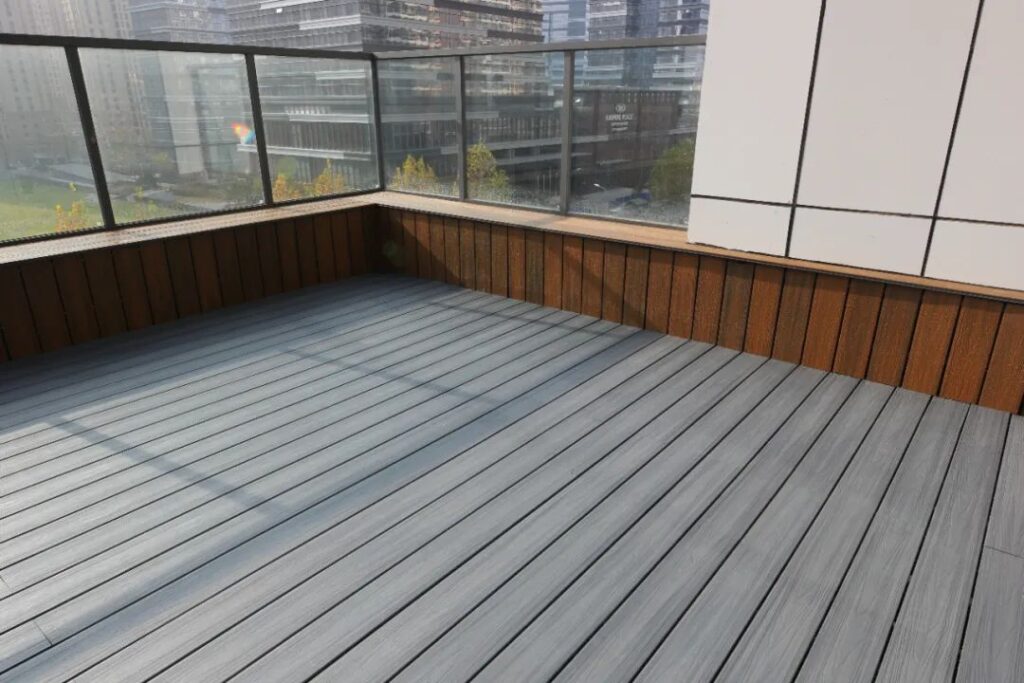
6. Is wood plastic made of recycled materials?
Yes. Wood plastic is made of recycled plastic and natural plant fibers such as waste wood chips or rice bran as raw materials.
7. What is the difference between wood plastic and plastic wood?
Unlike plastic wood (which is made from 100% plastic), wood plastic is made from plastic and wood chips in a ratio of approximately 1:1. Because of its natural fiber content, wood plastic has better UV resistance, lower thermal expansion and contraction, and is as easy to process as wood.
8. What is the service life of wood plastic profiles?
According to foreign data, the life of wood plastic can reach 25 years under normal use conditions.
9. How long is the service life of wood plastic outdoors?
Wood plastic is widely used outdoors, and most of it is used in public places with dense crowds. It is always tested by the flow of people and the environment. In such high-density places, the life of wood plastic can reach 5 years.When used in private spaces or low-traffic areas, wood plastic can last up to 10 years.
10. Is wood plastic an environmentally friendly material? How to deal with discarded wood plastic profiles? Will discarded wood plastic cause environmental pollution?
The environmental significance of wood plastic is multiple. On the one hand, it consumes waste plastics and wood powder that can pollute the environment. On the other hand, it can effectively replace the use of wood outdoors, thus saving a large amount of precious natural resources. Since it does not contain any toxic components, it can be treated in the same way as other ordinary construction waste without causing any pollution to the environment. Can be recycled and reused.

11. Compared with ordinary wood, how is the weight of wood plastic?
Compared with ordinary wood, the specific gravity of wood plastic is much larger, usually above 1.1, while the specific gravity of ordinary wood is 0.4~0.7, and even hardwood with a larger specific gravity has a specific gravity only around 1.0. Therefore, solid wood plastic is much heavier under the same volume, and hollow wood plastic is much lighter under the same volume.
12. How to process wood plastic? Do you need special tools?
WPC is just as easy to process as wood, and in some ways even easier. You only need to use ordinary wood processing tools to cut and drill wood plastic.
13. What types of screws are suitable for wood plastic profiles?
It is recommended to use high-quality screws such as stainless steel and hot-dip galvanized screws. It is especially recommended to use threaded screws, which will help increase the screw's nail-holding force.
14. Can wood plastic profiles be used as structural parts?
Can't. Although ordinary wood-plastic profiles have high strength and toughness, they are not as rigid as wood and therefore cannot be used as structural parts. However, modified glass fiber reinforced wood plastic has high rigidity and can be used for structural parts.
15. Does wood plastic have a high water absorption rate?
Wood plastic has very low water absorption due to a plastic layer wrapped around natural fibers such as wood fiber. Very suitable for waterfront landscaping.
Relatest Post
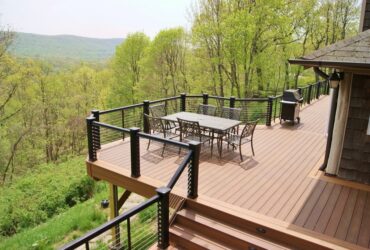
The Mechanical Performance Of Co-Extrusion Wood Plastic Composite Material
Details icon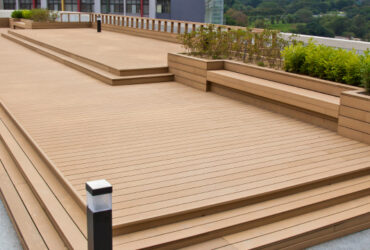
Insect-proof Imitation Solid Wood Outdoor Wood-plastic Composite Decking
Details icon